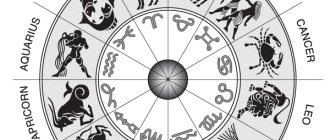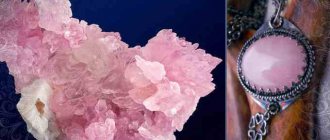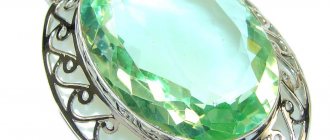The serpentine amulet is a special type of amulet that can be worn on a cord or a massive chain. The double-sided medallion usually depicts light images, which include gods and guardian angels; on the reverse side, snake-like evil spirits and forces are drawn, they seem to compete with each other and at the same time balance, allowing for harmony to be achieved.
Pagan Slavic amulets have reached us since the formation of ancient cultures, so they still remain valuable and interesting for esotericists, religious scholars and historians. Coils with amazing pagan symbols, made of bronze, are sold on our website. The products are distinguished by high quality material and detailing of miniature fragments, thanks to which it was possible to preserve the magical effect of each amulet. Buying the Serpentine amulet in our online store is as easy as pie - fill out the form and wait for the manager to call.
Serpentine amulet - the history of a magical sign
In ancient times, the image of a snake was given special meaning. This creature was a symbol of the earth. And she was a nurse for people, she gave life.
The Slavic and Baltic peoples held snakes in high esteem.
If you settled next to a hut, it was perceived as great luck. They treated the snake with respect, seeing in it a protector from evil spirits and witchcraft. Patterns with snakes decorated the walls of houses, they were applied to dishes, furniture, and embroidered on clothes, towels, and window curtains. People believed that this symbol had magical powers that could protect the family from attacks by hostile forces.
However, a special attitude towards snakes was characteristic not only of the Slavic peoples. They were revered along with dragons in Ancient China. In the eastern calendar, for example, there is the Year of the Snake. In ancient Egyptian mythology, the snake personified the cult of the Sun and the god Osiris. In the language of the Assyrians, the words “serpent” and “life” had a common origin, and the Indian god Shiva had the title “king of snakes.” In addition, among many ancient peoples, the snake is considered the bearer of the highest wisdom. Therefore, it is quite natural that the serpentine amulet appeared, which our ancestors used.
Even after the Baptism of Rus' by Prince Vladimir, people continued to use the amulet. But during the church schism in the middle of the 17th century, the tradition of wearing a serpentine was preserved only by the Old Believers. The official church did not approve of the use of the amulet, seeing it as a pagan symbol.
Old Russian amulet serpentine
In recent years, interest in ancient Slavic culture has revived and the talisman has become popular again.
Who is the serpentine amulet suitable for?
According to the eastern horoscope, this amulet is suitable for people born in the year of the Snake. Since they are characterized by sensitivity and emotionality, they are easily offended. And, if such a person accumulates resentment and anger in his soul, then it is better to stay away from him, since revenge will be cruel. This category of people remembers the insult for a long time. They have selfish manners, are temperamental and sociable. They do not like to be alone, to live without the participation and support of their friends, with whom they can always talk frankly about current problems. By nature they are conservatives, so they do not welcome change, but prefer constancy and stability. Of all the signs of the Zodiac, the Serpentine amulet is suitable only for Aries, Leo and Sagittarius. These signs belong to representatives of the fire element.
Current interpretation of the amulet
The very name “serpentine” indicates the central image of this amulet. The image of a snake contains the sacred meaning of the amulet, which was laid down by the ancient Slavic wise men.
The most common interpretation says that the amulet symbolizes the fertility of the earth, and the snake acts as a guard who protects the gate to the world of dark spirits, preventing the latter from invading the world of people.
It is also believed that the amulet protects the owner from snake bites and serious illnesses. The coil gives a person vitality and good health for many years.
The meaning of the amulet
Serpentine amulet on a pendant
Snakes had great symbolic meaning in ancient times: they personified strength and reliability. The snake is a symbol of earth and fertility. It was believed that the ancient Slavs could have a snake living in their house, which protected the spiritual origin of the family and protected the home from evil magic. Images of vipers and snakes were painted on the walls of houses and vessels for liquids. Individually or in balls.
In this way, the house was surrounded with protection from everything evil and bad: bad eyes and words, illness, failures and troubles. The symbolic image of snakes was applied to clothing through embroidery. By making clothes for her child with reptile embroidery, the mother wanted to protect him from all adversity. Therefore, the meaning of the serpentine amulet is protection and preservation of strength. The Slavic sign is popular to this day.
The special importance of snakes in the life of the Slavs was also emphasized in folklore. For example, the type of mermaid is a woman with a fish tail, and previously a snake tail. Another example is the 12-headed Serpent-Gorynych.
Serpentine amulet and its properties
The talisman is a medallion with two sides. An image representing Good, the forces of Light, is applied to the front side. For example, a symbolic image of the Sun or the figure of a saint. On the back there is a dark image, which uses the outline of a snake-like creature. This is where the name of the amulet comes from.
Sign of duality
The symbolism of the talisman reflects the dual nature of reality. Slavic magicians were well aware that we live in a world represented by two poles: Good and Evil, Light and Darkness. The dark gods do not always carry evil within themselves. It would be more correct to talk about the destructive side. Destruction in the physical world is a natural process. This is the stage after which a new cycle of life begins - like winter, which will still be followed by spring awakening.
2 sides of the medallion
Unfortunately, modern people have lost the wisdom of their ancestors. But even a person far from esotericism knows from experience that there are no people who are clearly bad or good. The same can be said about events. What at first seemed good later brings harm. And trouble in life suddenly turns into a benefit for our development.
Popularity of the amulet
Many centuries ago, the popularity of the talisman in Rus' was extremely high. It was used not only by wise men and warriors, but also by ordinary working people. Archaeologists have found these amulets in various designs: made of precious metals inlaid with precious stones, as well as made of simple stone, bone or wood.
A design in the shape of a snake was found on clothing in the form of patterned embroidery. Snake symbols were used to decorate clay and wooden dishes, horse harnesses, and weapons. And to protect houses, images of creatures who were credited with magical powers were painted on walls and doors. The Slavs believed that sacred animals would provide security for the home, safety for the livestock, and the land under their care would bring a bountiful harvest.
The popularity of the amulet was largely explained by the legend about the origin of snakes. It is believed that the lightning arrows that Perun the Thunderer sent from the sky reached the earth and turned into snakes to fulfill the will of the supreme Slavic god.
Variations of images
The general idea of the amulet fits into a simple form: a flat double-sided medallion, reflecting the bipolarity of the world. However, there are several options for execution. Traditionalists name eight varieties of serpentine.
- The most powerful talisman requires clear drawing of details. The main image is a human head, from which snake-like processes extend. Instead, the upper part of the human body is sometimes drawn.
- The lightweight form is the same as the first option, but the drawing is more schematic.
- Ugly talisman. It is based on the image of a woman who has two snakes instead of legs. A drawing is also used where a woman holds snakes in her hands, the tails of which resemble open wings.
- The monogram amulet is an intricate interweaving of snakes, similar to a mysterious figure.
- Sigmatic in the shape of a wheel. In the center of the circle is a reduced human head, from which snakes extend like rays. Their heads are turned in one direction, so that something like Kolovrat appears.
- Counter sickle. The emblem includes four pairs of snakes forming something like a cross. The reptiles' heads point in opposite directions.
- Intersecting sickle. The previous figure is taken as a basis, but the necks of the snake intersect at the top. The figure contains four more snakes in the form of oblique rays.
- Complex sickle. The emblem is based on a human head, from which snake bodies extend, intertwined in a bizarre pattern.
To choose the appropriate type of amulet for yourself, it is important to have more accurate information (magicians and wise men have it). If you do not have access to such knowledge, it is better to stay with the simplest form of the talisman and abandon the complicated emblem.
Serpentines are a unique symbol of dual faith in Ancient Rus'
The serpentine is a pagan amulet that existed almost until the 20th century. After the adoption of Christianity, the serpentine took the form of dual faith and was even actively used by the church. The official refusal of the church from serpentines, as amulets belonging only to paganism, occurred at the turn of the 17th-18th centuries.The serpentine is a double-sided metal and stone amulet medallion, usually round, oval, sometimes octagonal in shape. On one side the face of the Deity was depicted, on the other side there were images of snakes or snake-like creatures (from 6 to 14). After the adoption of Christianity, instead of the pagan Deity, Christian saints began to be depicted on one of the sides. However, the church did not remove the snakes from the other side. It is also worth noting that Serpentine amulets and amulets were characteristic not only of the Slavic peoples who settled in the territories of Rus' and Europe, but also of countries such as Byzantium, ancient Greece, etc. In any case, the coils had a protective function; they were designed to protect their owner from diseases, misfortunes, and evil magic. In Rus', coils are widespread in the central, eastern and northern parts. Archaeological finds confirm that these were one of the most common amulets among the ancient Slavs. They were worn by both ordinary people and noble persons - princes, boyars, and so on. During excavations, one encounters coils that are made of cheap materials, and amulets that are made of silver and even gold (“Chernigov hryvnia of Vladimir Monomakh”, found on the Belous River), which indicates their importance among the Slavs. Among other things, confirmation of the fact that serpentines were of great importance among the Slavic tribes is also evidenced by the fact that many amulets have been found that are based not only on the faces of pagan and Christian saints and images of snakes, but also on the coats of arms of princely and boyar families .
It is believed that the coils were worn over clothes and are found mainly in those places where cities or at least significant settlements for that time were once located. Although I personally am sure and I have good reasons for this, that the coil can be raised not only in the large populated areas described above. The date of their appearance is rather vague and uncertain: they appear in the 11th – 12th centuries (according to other sources in the 10th century), and continue to exist until the 16th century. It is also known that early samples were often copied at a later time, perhaps simply mechanically. According to experts, this indicates that this type of amulets was highly valued and was very popular for many centuries.
In general, serpentine amulets are associated with princely-boyar circles, but science today is well aware of not only examples made of gold or silver, but also those made of copper and bronze. Considering the popularity of serpentines, why shouldn’t ordinary people wear them, not to mention warriors and merchants? Unclear.
The very form and dedication of this amulet still causes great controversy in scientific circles. At one time it was believed that the serpentines were of Byzantine origin, but many subsequent excavations after this statement prove that this opinion is controversial. Much more coils have been found in Rus' than in Byzantium and other countries. There are also suggestions that serpentines came to Rus' from the pagan East or Greece.
Almost always, the coils are dominated by Greek inscriptions with a spell against black sickness (“hysteria”), which was translated into the Russian language of that time by the word DЪN - “inside”, “inside”, “womb”. On the front side there was depicted some Christian subject: Michael the Archangel, the Mother of God, the serpent fighter Fyodor Tiron, Fyodor Stratelates, healers Kozma and Damian, Boris and Gleb, the crucifixion, etc. and so on. Around the Christian images, along the outer circumference of the coil, there is an inscription, in the Russian version it looks like this: STJ ST ST ST G G SAVAOTH FULL OF THE HEAVEN AND THE EARTH GLORY TO TWO, which means: Holy, holy, holy is the Lord of hosts; heaven and earth are filled with your glory! True, the inscription was, as a rule, in Greek with abbreviations.
It turns out that in this way the image of this or that Christian character turned out to be secondary in relation to such a comprehensive, powerful circular inscription, which was directly addressed to the ruler of all things, the entire macrocosm in the understanding of the people of that time. The image of the saint located in the center, in modern terms, determined only the specifics of the help that the bearer of the amulet expected. It was either just a healer or a fighter against evil, personified in the form of a serpent, or someone who could ensure victory in the battle.
As for the dedication of the serpentine, the most reliable point of view is that it is a symbol related to the cult of the Earth and the Moon. On one side the Moon God was depicted, on the other side the Snakes were symbols of the Earth and fertility. We will talk about the controversial opinion about the Byzantine origin of amulets below, where I will give arguments in favor of the fact that serpentines could be original Russian, pagan symbols, amulets and amulets, and not at all a product of Greek mythology.
As you yourself can understand from all of the above, despite the widespread use of coils in Rus', its meaning for the most part remains a mystery. Another mystery is the method of wearing the coil, because none of the ancient amulets were found with a chain or cord, which means it cannot be said with certainty that this medallion was worn around the neck or in any other way. During the Christianization of Rus', some prerequisites were erased that could give an exact definition - what Deity was depicted on the coils and what purpose people pursued when they wore this particular amulet, preferring it to many others. Unlike Christian medallions, where snakes were often depicted on the head of some Deity, in more ancient versions, the snake side of the amulet has neither a bottom nor a top, and has a certain esoteric character, often representing a semblance of a solar symbol. This suggests that the solar symbol of snakes did not represent the Upper Sun, like other swastika symbols and Kolovrat symbols, but rather the underground Sun or Black Sun, the concept of which was very widespread among ancient peoples. Another clear difference between pagan and Christian serpentines is that during their study it was calculated with great accuracy - under Christianity, the main side (front) was the side with the face of the saint, since the face of the saint was carefully engraved, and the side with snakes was often of a general nature , which has received less attention. In pagan culture, everything is just the opposite - the front side is the side with snakes!
As for the nature of the side with snakes, according to the study of A. S. Orlov, they are divided into 8 types: Powerful (in the center is the head or upper part of the human figure with the twists of snake bodies), Lightweight (almost identical to the powerful type, but with more simplified forms), ugly (a female figure with writhing snakes instead of legs, the snakes are also in the figure’s hands and form the woman’s wings), monogram-shaped (the human figure is completely formed by snakes), wheel-shaped sigmatic (snake bodies diverge radially from the human head, while the snake heads are facing in one direction, as on the Kolovrat), crescent-shaped counter (eight snake bodies, which are grouped in pairs and represent a cross-shaped figure, the bodies of snakes have a crescent-shaped curve, and the heads are turned in different directions), crescent-shaped intersecting (consists of 12 snakes, 8 snakes grouped in pairs, and the remaining four represent an additional oblique cross, the snake necks intersect in the upper part), crescent-shaped compound intersecting (a human head, from which 4 snake bodies extend up and down, 2 snake bodies extend to the sides, while the snake bodies are intertwined in complex forms).
The frequent occurrence of snakes with a human head, which has snakes instead of hair, refers us to the myth of Medusa the Gorgon, which existed in Ancient Greece. Based on this and some other signs, many researchers conclude that serpentine amulets were originally invented in Greece, and only then penetrated into other countries. Just as Perseus, having cut off the head of the Gorgon and holding it in his hand, looking away from himself, turned the monster into stone, so the serpentine, which was worn by a man, represented a living personification of this story. The gaze of the Gorgon Medusa from the amulet was supposed to destroy all dangers and all enemies. If we also take into account the fact that in ancient Greece the head of the Gorgon was depicted on the armor and shields of warriors, then it may be quite likely that coils were invented in Greece.
It is worth saying that you should not be 100% sure that the image on the coils is the Greek Gorgon jellyfish. In Slavic tradition and beliefs there were also creatures like mermaids (depicted with a snake tail) depicted with a snake body. It is worth remembering the multi-headed Serpent-Gorynych, an ancient Russian dragon, which in many myths and legends is depicted as having 12 heads, which is quite consistent with the number of snakes on the coils. The dragon with several snake heads was practically the main character in many folklore legends, so the image of a snake-headed creature or a cluster of snakes may well belong to the Slavic tradition. The ancient Scythians had a snake-legged goddess Api. Snakes were very common in paganism. Snakes are mythological symbols of the Earth itself, so their image on amulets is not some kind of exotic innovation for the Slavs and could have originated in Rus', and not Byzantium.
The identity of the snakes is proved precisely by the beliefs of the Slavic peoples by the human figure with snakes not instead of hair, but instead of legs. Here we can no longer talk about the Gorgon Medusa, since any comparison would be a great exaggeration. The snake-footed figures are more similar to either Slavic mermaids or the Scythian goddess Api. At the same time, it is worth noting that the goddess Api is the deity of the Earth! It is for this reason that snakes are depicted instead of her legs, as creatures symbolizing the earth. So how did such different Gods, such as the Earth Goddess from Slavic beliefs and the Gorgon from Greek myths, end up on serpentine amulets? Perhaps the opinion of researchers is deeply erroneous and snakes were called Gorgons already in Christian times by Christians themselves, who saw in the images of the Slavic Gods similar features with Greek pagan Deities and creatures? It may also be that initially serpentines were original Slavic amulets, which depicted Earth Deities with snakes in their hands, with snakes on their heads and with snakes instead of legs. In this case, it becomes clear what this amulet symbolized and what it meant. It also becomes clear why serpentines were so widespread in Rus', where they vaguely imagined who the Gorgon jellyfish was, and, most likely, did not know at all, but they knew the ancient pagan Goddesses of the Earth, whom they depicted on their amulets. It also becomes clear why the Slavs carried these amulets with them. Based on the latest conclusions, the prevalence of these amulets was not at all due to the fact that an exotic monster with an unknown meaning was drawn on one of the sides, but due to the fact that the amulet was a pagan “icon” that symbolized the forces of the Earth , was a symbol of fertility and a talisman against the evil forces of the afterlife.
It’s amazing how quickly the snake pattern began to be considered not Russian, as soon as various figures wished for it, not taking into account the millennia-old heritage of Great Rus'. The snake pattern has been very common in painting, embroidery and applied arts for many millennia. Balls of snakes (snakes) were applied to altars, vessels, clothes and even houses. As for houses, this is generally a separate story, which could be devoted to a whole book. Clusters of snakes, pairs of snakes or single snakes decorated houses, as they were considered the patrons of the house. Legends have also been preserved that snakes once lived in houses with people, lived under the stove and were considered sacred guardians of the house, house spirits - tsmoks. In addition, snakes are associated with Perun’s arrows - lightning, rain, and, therefore, were the personification of the fight against evil forces and patronized the harvest. As you yourself can understand, the cult of snakes among the ancient Slavs was very extensive; they were given great importance in beliefs and worldviews. Female figurines with snakes in their hands were also found, which belong to the Trypillian culture. Based on all of the above, one should strongly doubt that coils are exclusively of foreign origin. Among the Slavs, snakes were held in high esteem and played a huge role in beliefs and magical performances, so where, if not here, were the amulets that are known today as Serpentines born?!
Still, dual faith was not only the result of the Russian Orthodox Church’s tolerance for pagan beliefs. And did this tolerance really exist? But dual faith can certainly be considered an indicator of the reluctance to abandon the faith of their ancestors, both in the circles of the Russian aristocracy (princes, boyars) and among ordinary people. This means that even after the adoption of Christianity, paganism developed, improved and developed new indirect methods of competition with religion imposed from outside.
Perhaps the serpentine amulets, to some extent, gave confidence to the person of that time - if something happened, a new faith, an alien God, it remains to be seen whether they will help, but the protective signs commanded by the great-grandfathers will certainly protect.
In my own opinion, it may well be that the church itself did not prevent the wearing of such amulets for one simple reason. The organizers of Christianity in Rus' also did not always go ahead, acting exclusively by force. It could also be that, certainly knowing about the dual meaning of serpentine amulets, Orthodox clergy, looking to the future, simply taught people to wear items with Christian symbols and to believe in them. There are also many other Christian sculptures, especially from the pre-Mongol period, where the shape of the same crosses, for example, is close to the shape of a circle, which was more familiar to the pagans.
The most famous of the ancient Russian coils is the golden “Chernigov hryvnia of Vladimir Monomakh”.
This is a very large golden coil, which, apparently, actually belonged to Vladimir Monomakh himself. And he lost it during a hunt on the Belovos River near Chernigov, where Monomakh reigned from 1076/78 to 1094. It is customary to date the serpentine amulet to the same years.
The core of the reverse side of the coil is occupied by a complex composition of ten dragon-snakes surrounding a figure whose upper body is female, and the lower part is serpentine, its arms and legs turn into serpentine twists, ending with dragon heads. Also, the reverse side contains the usual inscription of a spell from “hysteria” - dany and a second inscription: G(LORD)I, HELP YOUR SLAVE VESILIUS. AMINE. Vasily is the godname of Vladimir Monomakh.
On the front side there is an image of the Archangel Michael, the patron saint of Kiev, followed by a circular Greek inscription, then a circular wavy line is depicted (the world ocean, not in a geographical sense, of course?), and along the outer edge there are symbols of plant power (krins), facing outward: “Let everything is growing and prospering.”
The beauty is indescribable, the art of the masters evokes the greatest admiration!
Currently, ancient Russian coils are very popular among reenactors of the period of Ancient Rus', history buffs, and collectors.
Our online store mednyobraz.ru invites you to buy a unique copy of the ancient Russian serpentine amulet of the 13th century, with the image of Our Lady of the Sign “Oranta”, in silver and copper.
It will be a great gift for you and your friends! You can buy it here.
Written using materials from the article by academician B.A. Rybakov “Paganism in urban life of the 11th-13th centuries.”
How to make a coil
There is a belief that only a self-made coil has true power. This view is not without foundation.
DIY coil
When a person makes a magical object, he puts part of himself, his energy, into it. Thus, the amulet will resonate with the vibrations of the owner’s soul, and its protection will be more effective. A talisman with someone else's energy can cause harm. At best, it will not be very effective.
When starting to make a talisman, you must have detailed information about each element of the pattern. If possible, consult an expert on Slavic mythology and symbolism. If you do not have such a mentor, and you are superficially familiar with the history of Rus' and its traditions, then it is better not to take on the work of creating a sacred amulet.
If the meaning of the chosen drawing is clear to you, then you can calmly begin to implement the plan. Show your creativity and imagination. But remember: you can only use new tools to make an amulet. An ordinary knife from the kitchen will not work. The materials for the talisman should also be new.
Material for production
Judging by the finds of archaeologists, various materials were used to make the serpentine amulet:
- wood;
- clay;
- natural stones;
- metals: gold, silver, copper, iron.
Of course, representatives of the nobility could afford a talisman made of precious metals. Also, rich people wore talismans interspersed with precious stones.
People from the lower strata of society made amulets from simpler and more accessible materials, such as clay or wood. Trees serve as a symbol of duality, since their roots go into darkness, and their branches reach out to the sunlight. In addition, they are connected to deep water sources.
To create an amulet yourself, not any metal is suitable, but only the one that will shine after polishing. It symbolizes the bowels of the earth, and the shine will resemble sunshine or moonlight.
Rules for using a coil
The amulets discovered by archaeologists do not give an exact answer as to how the amulet was worn in ancient times. Perhaps our ancestors did not have a single tradition of wearing a coil. But now it is customary to wear the amulet around the neck, like a pendant. Some people prefer to use leather lace, but snakeskin is absolutely not suitable.
The coil should be hidden under clothing so that it is not visible to prying eyes.
It should also be remembered that not all Slavic amulets coincide in energy with the serpentine. Therefore, the joint use of such talismans by the Magi was not recommended. They will bring more benefit if you wear them separately from each other. Such symbols that have a different charge with the serpentine include swastika emblems: Kolovrat, Gromovik, Posolon.
How to strengthen the effect of the Serpentine sign?
In order for a bronze coil purchased on our website to “become close” to its owner, experts recommend performing a simple magical ritual. You should not be afraid of the cleansing ritual - it will just combine the amulet with your aura, nothing bad can happen. Place the amulet in a container with salt for a couple of hours, it will remove all negative energy.
Remember that metal needs to be polished from time to time until it shines. The shimmering amulet symbolizes the depth of the magical sign and collects the necessary energy from the moon and sun.
Coil power
The ancient amulet has incredible power, as well as multifaceted effects.
- First of all, the amulet takes on negative energy directed at the owner of the talisman. This is why the coil needs to be cleaned at regular intervals.
- Also, the double-sided medallion reflects external influences and returns the dark flow back to the one who tried to cause harm.
- With the help of a talisman, a person comes into contact with the world of spirits, penetrates into the secret knowledge of the Magi, and joins the sacred heritage of his ancestors.
- The ancient Slavic knights always took a talisman on military campaigns. The talisman protected from wounds and saved the warrior’s life. Nowadays, the protective properties of the coil can be used when making long trips. The amulet will ward off any danger from you and will attract good luck.
How to activate the amulet
People who decide to resort to coil protection do not always know all the intricacies of handling the talisman. They carry it with them, hang it in the car or on the wall of the room. But at the same time, their amulet did not go through the activation ritual. Such an amulet has no power and does not possess protective properties. The coil must be connected to the energy of the Creator, only in this case it will become a powerful tool of protection.
To activate the talisman, you must turn directly to the Almighty and ask for his protection. At this moment, it is important that your mind is clear of extraneous thoughts and your heart is open to God.
Your request to the Creator must be thought out in advance and clearly formulated. Therefore, before praying, determine why you need a sacred amulet and how you are going to use its power. And for this you will need to get complete information about the wonderful properties of the talisman.
It is not customary to give this amulet even to like-minded people. This is especially true for the coil that you used yourself. By giving away the amulet, you do not just lose protection. The aura will become vulnerable to external negative influences, and luck will disappear from your life for a long time.
Where to buy Coil?
Where to buy a serpentine, which was worn by ancient healers and magicians? In our online store you can order a unique Nikon medallion that helps against black power. If you feel negativity from the person standing next to you, just touch the decoration or do it mentally, ask them to turn the ill-wisher away from you.
If you want to emerge victorious from any situation, the serpentine of St. George the Victorious will help with this - a powerful protective amulet of the saint. On the pendant, St. George the Victorious, ready for battle, is depicted on a zealous horse. The commander holds a large sword in his hands, and his face expresses sternness and determination. On the other side of the bronze medallion, snakes are hand-cast, which form the rays of the sun, symbolizing the endless energy of the eternal luminary, awakening life and calming darkness, bringing equilibrium and balance to the world. A similar pendant, the Reliquary, contains a folding cross, signifying its involvement in the church and religion.
If you liked several original handmade bronze coils at once, please yourself and your loved ones - order amazing products with unique protective properties on our website right now! We make sure that our clients remain satisfied!
Features of cleaning and charging the snake swastika
The coil acts like any other amulet: it takes on the negativity that was directed at the owner. At some point, the accumulated negative energy blocks the protective functions of the amulet. Therefore, periodically the talisman needs a cleaning ritual. Also, cleansing is extremely necessary if you did not make the coil yourself, but purchased it in an esoteric store.
Experts recommend performing the ritual using fire or earth. In the first case, place the amulet on the table and place a wax candle next to it. During the time the candle burns (usually it takes about an hour), the sacred symbol will get rid of dark layers. To cleanse the Earth Element, the coil is wrapped in a plastic or paper bag and placed in a bowl of salt overnight.
After the ceremony, the amulet should lie in the rays of sunlight, and then in the light of the Moon. Thus, the energy of the coil will become neutral. The next step will be to charge the talisman with the energy of the owner’s hands. The procedure is simple, but maximum concentration is required.
You need to place the coil in front of you. Then rub your palms together until you feel warmth emanating from your hands. Imagine that there is a dense hemisphere between your palms, and cover the amulet with this imaginary cup. Hold your hands over the amulet for two to three minutes. There should be a clear picture in the mind that the energy of the palms smoothly flows into the talisman.










